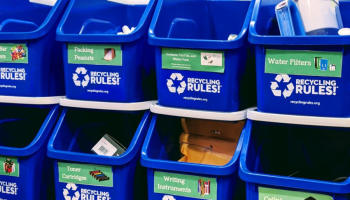Air pollution can be seen from time to time in California. Large trucks and factories, for example, produce dark smoke that can be seen coming out of their exhaust pipes. Air pollution, on the other hand, is often imperceptible.
Even though the pollutants are invisible, polluted air can still pose a threat. As a result, it can cause a burning sensation in people’s eyes and difficulty in breathing. It can also raise the risk of developing lung cancer, as well.
The effects of air pollution
Air pollution can quickly kill. Bhopal, India, suffered a fatal gas leak in 1984 after an accident at the a pesticide plant. Within a few days, at least 8,000 people had perished. Additionally, tens of thousands of people suffered life-altering injuries.
Air pollution can rapidly rise as a result of natural disasters. Volcanic ash as well as gases are released into the atmosphere when a volcano erupts. For months, the sky can be stained by volcanic ash. Krakatoa’s ash cloud engulfed the globe in 1883, obscuring the night sky. As far down fast as Europe and America, fewer crops were harvested because of the dimmer sky. The “equatorial smoke stream” has been studied by meteorologists for decades. Krakatoa’s smog made a jet stream visible in the Earth’s upper atmosphere, which is where the smoke came from.
sulphur dioxide and other volcanic gases can kill residents in the area and deplete the soil of nutrients for years. One of Italy’s most infamous eruptions was Mount Vesuvius, which killed hundreds of people in nearby Pompeii and Herculaneum in 79. The eruption of Vesuvius did not kill the majority of its victims, who were killed by falling lava or landslides. Volcanic gases suffocated or choked them to death.
Cameroon’s Lake Nyos was covered in a toxic cloud in 1986. The caldera of a volcano is where Lake Nyos is located. Volcanic gases were ejected into the lake although the volcano really do not erupt. A cloud of hot gases rose from the lake and descended the volcano’s slopes and into the nearby valleys. Birds and other wildlife in their natural habitat were killed by the toxic cloud as it moved across the landscape. In addition to the 1,700 people who died as a result of the pollution, thousands of cattle died as well.
However, most of the pollution in the air is man-made. Fossil fuels like coal, oil, or natural gas are used to create it. Carbon monoxide, a colourless, odourless gas, is produced when fuel is burned to power automobiles and trucks. In high concentrations or quantities, the gas is harmful. Carbon monoxide from city traffic is highly concentrated.
Chemical pollution
Nitrogen oxide, sulphur dioxide, and hydrocarbons are among the other common pollutants produced by automobiles and factories. Smog is an air pollution haze that forms when certain chemicals react with sunlight. Linfen, China, suffers from such dense smog that it is difficult for residents to see the sun. The colour of smog varies depending on the type of pollutants present.
Children and the elderly, in particular, have a difficult time breathing because of the smog. Air pollution warnings are issued by some cities when the smog is particularly bad. Hong Kong’s government, for example, will issue a warning to its citizens not to go outside or start engaging in strenuous physical activity (like running or swimming) when smog levels are high.
Acids are formed when air pollutants like nitrogen oxide and sulphur dioxide react with water. Acid rain is formed as a result. Acid rain is frequently transported long distances by the wind. As a result of pollution from factories in Spain, acid rain can fall as far away as Norway.
Acid rain can wreak havoc on a forest, killing all of its trees. Also, lakes, streams, as well as other waterways can be devastated by it. Fish are unable to survive in acidic lakes. Acid rain in Sweden has caused thousands of lakes to become “dead lakes,” meaning that fish are no longer present.
Marble and other types of stone are also damaged by acid rain. Gravestones have been defaced and many historic buildings but rather monuments have been damaged by it. While the Taj Mahal was once white, it’s now a dark brown. It has turned a yellowish hue from prolonged exposure to acid rain.
Limiting pollution in California
According to Dumpster HQ Riverside CEO Mike Willis, limiting pollution emissions into the atmosphere has been one strategy California has used to combat acid rain. Despite some progress in North america, acid rain remains a serious concern in the developing world, particularly in Asia.
An additional pollutant in our atmosphere is produced by the burning of fossil fuels. Carbon dioxide but also methane are both naturally occurring greenhouse gases. They are, in fact, essential for the survival of life on Earth. They capture the reflected sunlight from the planet’s surface and divert it away from the sun’s rays. They keep the Earth’s surface warm enough for human habitation because they trap heat in the atmosphere. The term for this phenomenon is the “greenhouse effect.”
Burning fossil fuels as well as destroying forests, on the other hand, has pushed greenhouse gas levels higher into the atmosphere. Global temperatures are rising as a result of this increase in the greenhouse effect. A record-breaking decade of warmth began in 2000. Global warming is the term used to describe the rise in global average temperatures, which is attributed in part to human activity.
Glaciers and ice sheets are melting as a result of global warming. At the rate of two millimetres (0.09 inches) per year, sea levels are rising. The low-lying coastal areas will eventually be flooded by rising sea levels. The climate change threatens entire nations like the Maldives.
Acidification of the oceans is also a result of human-caused global warming. As the oceans take in even more carbon from the atmosphere, they become more acidic. Warmer, less salty water has a lower biodiversity because fewer organisms can survive. Coral reefs and other marine organisms are under threat because they are unable to adapt to much more acidic oceans.
Global warming is expected to lead to an increase throughout severe storms, according to scientists. Flooding and drought will also increase as a result of climate change. This is not helping with sustainability
Plant and animal habitats will shrink as a result of rising average temperatures, which is already happening in some areas. Seals are hunted by polar bears from the Arctic sea ice. Polar bear populations are dwindling as a result of the bears having to travel further in search of food due to the melting ice.
People and governments have the potential to reduce air pollution quickly and effectively. During the 1980s and 1990s, governments worked hard to reduce air pollution from chlorofluorocarbons (CFCs). Foam, aerosol cans, and refrigerator gases all contain CFCs.
Damage to the ozone, a layer in the upper atmosphere, is caused by the use of CFCs. The ozone layer shields the Earth from the sun’s harmful ultraviolet radiation by absorbing a large portion of it. There is an increased risk of skin cancer, eye disease, and other illnesses when people have been exposed to much more ultraviolet radiation.
While studying Antarctic ozone in the 1980s, researchers noticed how thin the ozone layer had become over the region. The “ozone hole” is a common moniker for this area of the atmosphere. Antarctica is devoid of permanent inhabitants. However, Australia, with its population of over 22 million, is perched precariously on the rim of the pit. The Australia began a campaign in the 1990s to educate the public about the dangers of overexposure to the sun. In many countries, such as the U.s, CFC production has been severely restricted.





